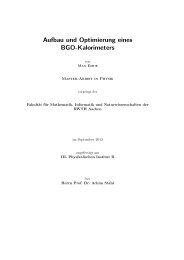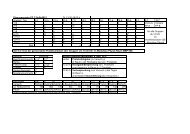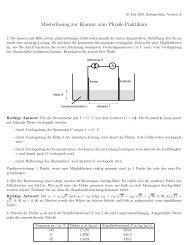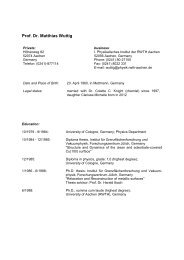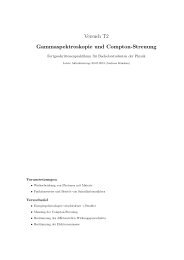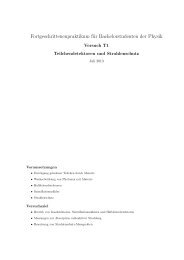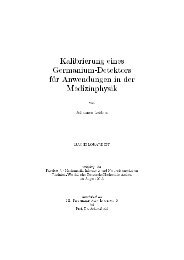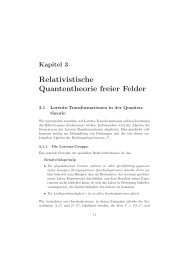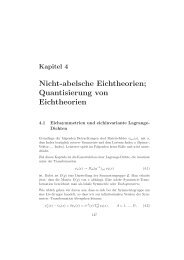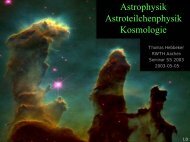Workshop book - Physikzentrum der RWTH Aachen - RWTH Aachen ...
Workshop book - Physikzentrum der RWTH Aachen - RWTH Aachen ...
Workshop book - Physikzentrum der RWTH Aachen - RWTH Aachen ...
You also want an ePaper? Increase the reach of your titles
YUMPU automatically turns print PDFs into web optimized ePapers that Google loves.
Talks Monday February 4<br />
Spontaneous atomic-scale magnetic skyrmion lattice in an ultra-thin film<br />
Stefan Heinze, University of Kiel, Germany<br />
Skyrmions are topologically protected field configurations with particle-like<br />
properties that play an important role in various fields of science [1]. In<br />
the context of magnetism, they have been predicted to form stable phases<br />
and, recently, experimental evidence for their existence has been found for<br />
bulk materials in a certain range of temperature and magnetic field [2,3]. A<br />
very important ingredient for their occurrence is the Dzyaloshinskii-Moriya<br />
interaction (DMI) which was recently found to be strong also in ultrathin<br />
magnetic films on substrates with large spin-orbit coupling [4]. In these systems<br />
the DMI induces spin-spirals with a unique rotational sense propagating<br />
along one direction of the surface as observed for ultra-thin films [4-6] and<br />
atomic chains [7]. The latter case is a prototypical system in which the<br />
hybridization between the 3d-transition-metal chains (Fe) hybridize strongly<br />
with the heavy 5d-transition-metal substrate (Ir) which leads to a weak<br />
Heisenberg exchange interaction and a dominant DMI. Here, we go a step<br />
beyond and present an atomic-scale magnetic skyrmion lattice for a hexagonal<br />
Fe monolayer on the Ir(111) surface [8]. We develop a spin-model<br />
based on density functional theory that explains the interplay of Heisenberg<br />
exchange, DM interaction and the four-spin exchange as the microscopic<br />
origin of this intriguing magnetic state. Experiments using spin-polarized<br />
scanning tunneling microscopy confirm the skyrmion lattice which is incommensurate<br />
with the un<strong>der</strong>lying atomic lattice.<br />
This work is a collaboration with G. Bihlmayer, S. Blügel, K. von Bergmann,<br />
M. Menzel, A. Kubetzka, J. Brede, and R. Wiesendanger.<br />
[1] T. H. Skyrme, Proc. R. Soc. Lond. Ser. A 260, 127 (1961).<br />
[2] S. Mühlbauer et al., Science 323, 915 (2009).<br />
[3] X. Z. Yu et al., Nature 465, 901 (2010).<br />
[4] M. Bode et al., Nature 447, 190 (2007).<br />
[5] P. Ferriani et al., Phys. Rev. Lett. 101, 027201 (2008).<br />
[6] Y. Yoshida et al., Phys. Rev. Lett. 108, 087205 (2012).<br />
[7] M. Menzel et al., Phys. Rev. Lett. 108, 197204 (2012).<br />
[8] S. Heinze et al., Nature Phys. 7, 713 (2011).<br />
24





